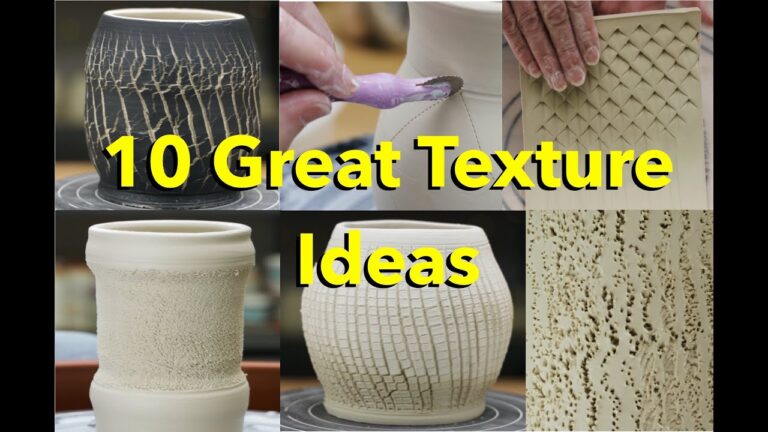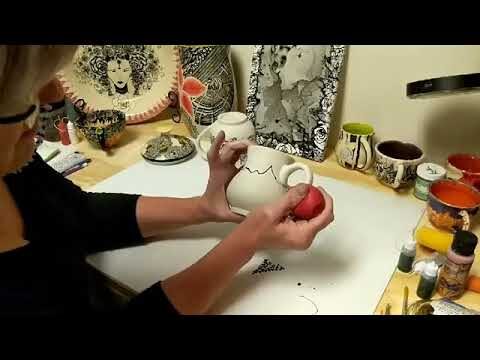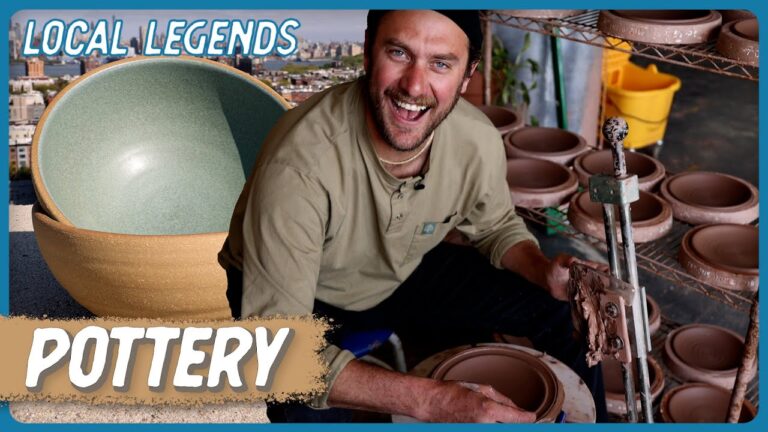Looking to add depth and interest to your ceramic creations? Creating texture in ceramics is a surefire way to elevate your pieces and make them truly stand out. Whether you’re a seasoned pro or just starting out, incorporating texture can bring a whole new dimension to your work. In this article, we’ll explore different techniques and tools for creating texture in ceramics, as well as provide tips and inspiration to help you take your creations to the next level.
- Use various techniques such as carving, stamping, and impressing to create texture in ceramics.
- Experiment with different types of clay and glazes to enhance the tactile quality of the ceramic surface.
Advantages
- Versatility: Creating texture in ceramics allows for a wide range of creative possibilities, from intricate patterns to unique surface designs.
- Visual Interest: Textured ceramics can add visual depth and complexity to a piece, making it more engaging and dynamic.
- Tactile Experience: Textured ceramics provide a tactile experience for both the creator and the viewer, adding a sensory dimension to the artwork.
Disadvantages
- Time-consuming process: Creating texture in ceramics can be a time-consuming process, as it often requires multiple steps and techniques to achieve the desired results. This can be frustrating for artists who are looking to create pieces quickly.
- Limited control: The process of creating texture in ceramics can be unpredictable, as the outcome is often influenced by factors such as clay consistency, firing temperature, and glaze application. This can make it difficult for artists to have full control over the final product.
- Increased risk of defects: Adding texture to ceramics can increase the risk of defects such as cracking, warping, or uneven surfaces. This can be frustrating for artists who have put in time and effort to create a textured piece, only to have it ruined during the firing process.
- Limited versatility: While texture can add visual interest to ceramics, it can also limit the versatility of the piece. Textured surfaces may be more difficult to clean, use, or display, which can be a drawback for artists who want their pieces to be functional as well as decorative.
What is texturing in ceramics?
Texturing in ceramics refers to the manipulation of the surface of the material to create unique patterns and designs. This process can involve techniques such as carving, stamping, or impressing to add depth and visual interest to the finished piece. By carefully considering the texture of a ceramic piece, artists can enhance its overall aesthetic appeal and create a more dynamic visual experience for the viewer.
The texture of a ceramic piece can greatly affect its appearance and feel. A rough texture can create a sense of ruggedness or earthiness, while a smooth texture can convey a more refined and polished look. Artists often experiment with different texturing techniques to achieve the desired effect, using tools and materials to create intricate patterns and designs on the surface of the clay. By paying attention to the texture of their work, ceramic artists can add depth and dimension to their creations, making them more visually engaging and unique.
In conclusion, texturing plays a crucial role in the world of ceramics, allowing artists to add personality and character to their creations. By manipulating the surface of the material, artists can create visually stunning pieces that captivate the viewer’s attention and evoke a range of emotions. Whether through carving, stamping, or other techniques, texturing in ceramics offers endless possibilities for creativity and expression, making each piece a truly one-of-a-kind work of art.
What causes texture to form in clay?
Looking for a unique way to add texture to your clay creations? Look no further than your crafting drawer! Simply grab some lace, preferably made from a firmer material like sisal, and press it onto your clay sheet with your fingers or the heel of your hand. This easy technique will instantly add depth and dimension to your clay projects, giving them a one-of-a-kind look.
Texture in clay can be easily achieved by using everyday items like lace from your crafting drawer. The firm material of the lace, such as sisal, allows for a clear and defined impression when pressed onto the clay sheet. With just a few simple steps, you can add an interesting and unique texture to your clay creations, making them stand out from the rest.
When should texture be added to pottery?
Adding texture to pottery can elevate the design and create a unique visual appeal. Whether you are in the process of forming your piece or it is already made but still malleable, there are ways to incorporate texture seamlessly. If your clay is still soft, consider using a textured material and a rolling pin or Pony Roller to imprint the desired design onto the surface.
By strategically adding texture to your pottery, you can enhance the overall aesthetic and create a one-of-a-kind piece that stands out. Whether you are looking to achieve a subtle pattern or a more intricate design, incorporating texture at the right stage of the process can make a significant difference in the final result. Experimenting with different techniques and tools can help you discover new ways to bring your pottery to life.
Enhance Your Ceramic Creations with Proven Texture Techniques
Are you looking to elevate your ceramic creations to the next level? Look no further! With our proven texture techniques, you can enhance your pieces and add depth and visual interest. Whether you’re a beginner or a seasoned ceramic artist, these techniques are sure to inspire and elevate your work.
From simple imprints to intricate carving, there are countless ways to add texture to your ceramics. Experiment with different tools and techniques to create unique patterns and designs that will set your pieces apart. By incorporating textures into your work, you can create a tactile experience for viewers and add a dynamic element to your creations.
Don’t be afraid to get creative and push the boundaries of traditional ceramic techniques. Embrace the versatility of textures and explore new ways to incorporate them into your work. With dedication and practice, you can master these proven texture techniques and take your ceramic creations to new heights. Elevate your artistry and make a statement with your textured ceramics today!
Elevate Your Craft: Mastering Depth in Ceramic Design
Are you ready to take your ceramic design to the next level? Elevate your craft by mastering the art of depth in your creations. Adding depth to your ceramic pieces not only enhances their visual appeal, but also adds a sense of sophistication and complexity to your work. Experiment with different techniques such as carving, layering, and texturing to create stunning pieces that truly stand out.
By learning how to master depth in ceramic design, you can bring a whole new dimension to your creations. Whether you are a beginner or an experienced artist, incorporating depth into your work can elevate the overall aesthetic and make your pieces truly unique. Take the time to practice and refine your skills, and watch as your ceramic designs reach new levels of creativity and artistry. Elevate your craft today by exploring the endless possibilities of mastering depth in ceramic design.
Dive Deep into Ceramic Texture: Expert Techniques Unveiled
Uncover the secrets of ceramic texture with expert techniques that will take your art to the next level. From intricate carving to innovative surface treatments, this in-depth guide will show you how to create captivating textures that bring your ceramic pieces to life. Whether you’re a seasoned ceramic artist or just starting out, these expert techniques will inspire and elevate your work, allowing you to dive deep into the world of ceramic texture with confidence and skill.
Incorporating texture into ceramic pieces adds depth and visual interest, elevating the overall aesthetic and creating a unique tactile experience for the viewer. By experimenting with different techniques such as carving, stamping, or adding inclusions, artists can bring their creations to life and showcase their skill and creativity. Whether it’s through subtle details or bold, dramatic elements, the use of texture in ceramics allows for endless possibilities and opens up a world of artistic exploration. So, next time you’re working with clay, consider the impact that texture can have on your pieces and let your imagination run wild.



